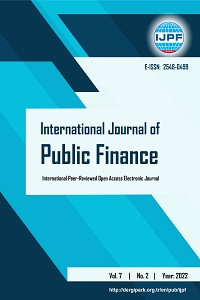Abstract
This study empirically examines and compares the impact of foreign aid on growth in 6 South Asian countries: Bangladesh, Bhutan, India, Nepal, Pakistan, and Sri Lanka, using annual data over the period 1980–2019. The empirical results for comparative analysis are based on the methods of variance decomposition and impulse response function. The results show that the impact of foreign aid shock on the growth variation is about 1%–2% in 5 countries and 7.76% in Nepal. This means that the endogenous relationship between foreign aid and growth is not large in 6 South Asian countries. In addition, a foreign aid shock has a positive impact on growth in Bhutan and India, and has a negative impact on growth in other countries. A possible reason for the positive impact in Bhutan and India is that these countries have better governance and transparency than other South Asian countries. Further, the shock of foreign aid on the fluctuation of growth disappears in 2–3 years at the most, suggesting that most foreign aid is ineffectively managed and used for consumer goods. Therefore, it is necessary to improve governance and transparency so that foreign aid can be positively linked to growth, and it is desirable to provide foreign aid in the form of increasing capital goods.
References
- Sunho Lee, Professor, Department of Chinese Studies and Economics, Hannam University, sunho.eco@hnu.kr
- Jong Ha Lee, Professor, Department of International Trade, Chosun University, jhlee.eco@gmail.com
Abstract
This study empirically examines and compares the impact of foreign aid on growth in 6 South Asian countries: Bangladesh, Bhutan, India, Nepal, Pakistan, and Sri Lanka, using annual data over the period 1980–2019. The empirical results for comparative analysis are based on the methods of variance decomposition and impulse response function. The results show that the impact of foreign aid shock on the growth variation is about 1%–2% in 5 countries and 7.76% in Nepal. This means that the endogenous relationship between foreign aid and growth is not large in 6 South Asian countries. In addition, a foreign aid shock has a positive impact on growth in Bhutan and India, and has a negative impact on growth in other countries. A possible reason for the positive impact in Bhutan and India is that these countries have better governance and transparency than other South Asian countries. Further, the shock of foreign aid on the fluctuation of growth disappears in 2–3 years at the most, suggesting that most foreign aid is ineffectively managed and used for consumer goods. Therefore, it is necessary to improve governance and transparency so that foreign aid can be positively linked to growth, and it is desirable to provide foreign aid in the form of increasing capital goods.
References
- Sunho Lee, Professor, Department of Chinese Studies and Economics, Hannam University, sunho.eco@hnu.kr
- Jong Ha Lee, Professor, Department of International Trade, Chosun University, jhlee.eco@gmail.com
Details
| Primary Language | English |
|---|---|
| Subjects | Economics |
| Journal Section | Research Article |
| Authors | |
| Publication Date | December 29, 2022 |
| Submission Date | July 22, 2022 |
| Acceptance Date | September 4, 2022 |
| Published in Issue | Year 2022 Volume: 7 Issue: 2 |
Cited By
Foreign Aid and Economic Growth in South Asian Countries
Emerging Economy Studies
https://doi.org/10.1177/23949015231207932
________________________________________________________________________________________________________________________
Content on this site is licensed under a Creative Commons Attribution 4.0 International license.


